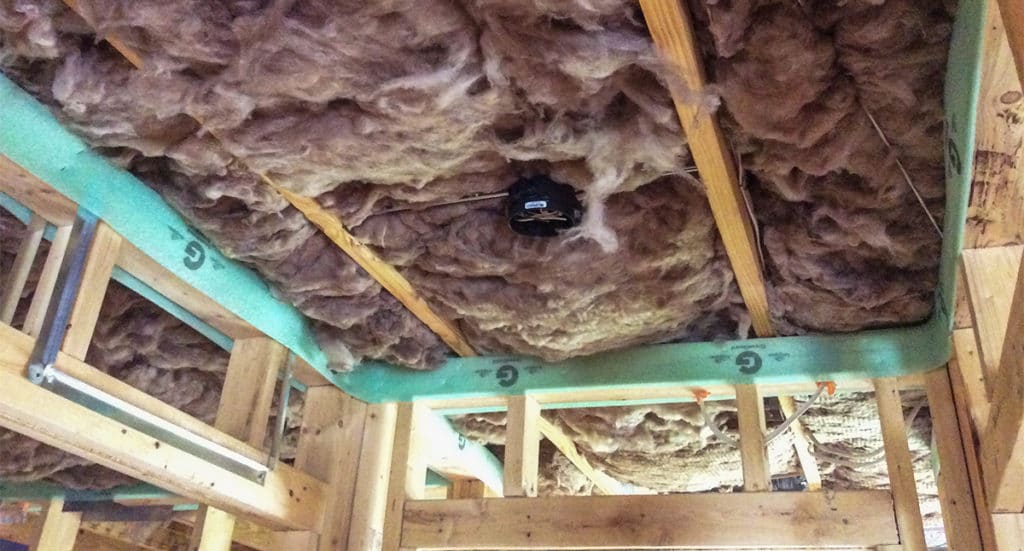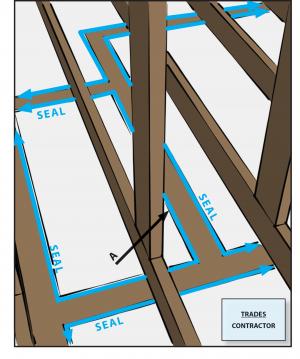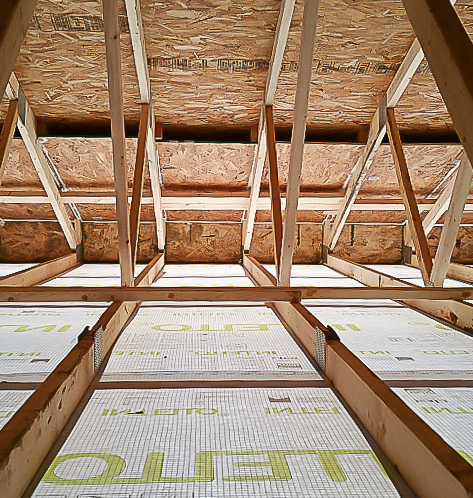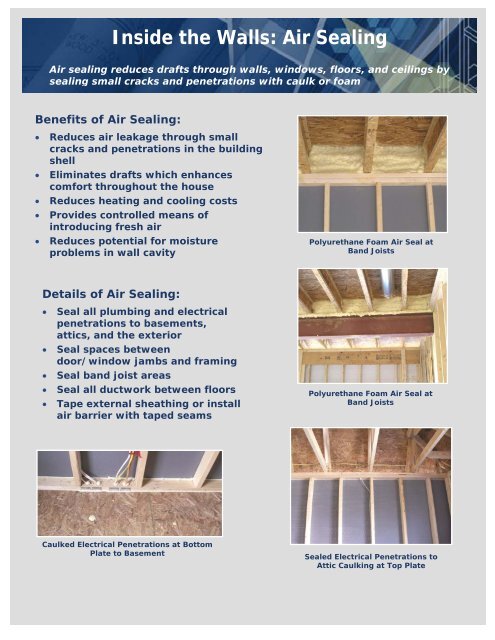I recently had an energy audit done and the auditor gave me a quote for air sealing the attic sealing top plates and any wire plumbing and lighting penetrations.
How to air seal tight areas in attic framing.
Air sealing the attic door.
This is time well spent.
At the better level we are doing everything we can to stop air flow at the outside wall.
While you are in the attic sealing air leaks look for.
If the area is wider than a 1 4 the caulk can fall out of the groove.
You can also use a rigid foam board combined with some spray foam to insulate the open joist cavities.
For larger holes filler material may be needed.
Once the drywall is hung these areas will be inaccessible.
It s easy to overlook electrical wires ducts pipes and vents in the attic but the openings around these are holes can compromise the air sealing of your attic.
If you pressurize the house with a window fan you may be able to feel the leaks with your hand as the air finds its way into the attic.
Foam is used in areas that are too wide for the caulk.
Seal fireplace and furnace holes.
Your attic door or drop down attic stairs are a major source of air leakage.
See the attic air sealing guide and details.
Your options for air sealing the attic door are.
Insulate and seal the area behind kneewalls by filling a large garbage bag with a 24 inch piece of fiberglass insulation and stuffing it into the open joist space underneath the wall.
There is typically a gap between the framing of.
In warmer weather you ll find water staining in these same areas.
To seal these openings use caulk or spray foam.
A home energy company has proposed a solution that involves sealing air leaks in the bedroom ceilings attic floor sealing around the chimney weatherizing the attic hatch insulating a few roof areas that the builders missed and adding cellulose to the rest of the attic to bring it up to r 60.
This critical area to seal is actually very tricky.
In this video i ll show you how to do it inside outside.
Just like with the good air sealing methods i prefoam framing cavities and take care sealing details and penetrations with foam caulk and tape.
It s by far the largest hole in your ceiling and it s probably costing you a fortune.
The acrylic latex caulk is for all the gaps that are small enough for the caulk to function properly such as the base plate and the seam between the floor and wall and the fire rated caulk is non combustible and for any areas where wires penetrate through base.
Air sealing should be done before insulation is installed.
Blocking the air from leaking through the attic door is one of the most important things you can do.
In cold weather you may see frosty areas in the insulation caused by warm moist air condensing and freezing as it hits the cold attic air.










